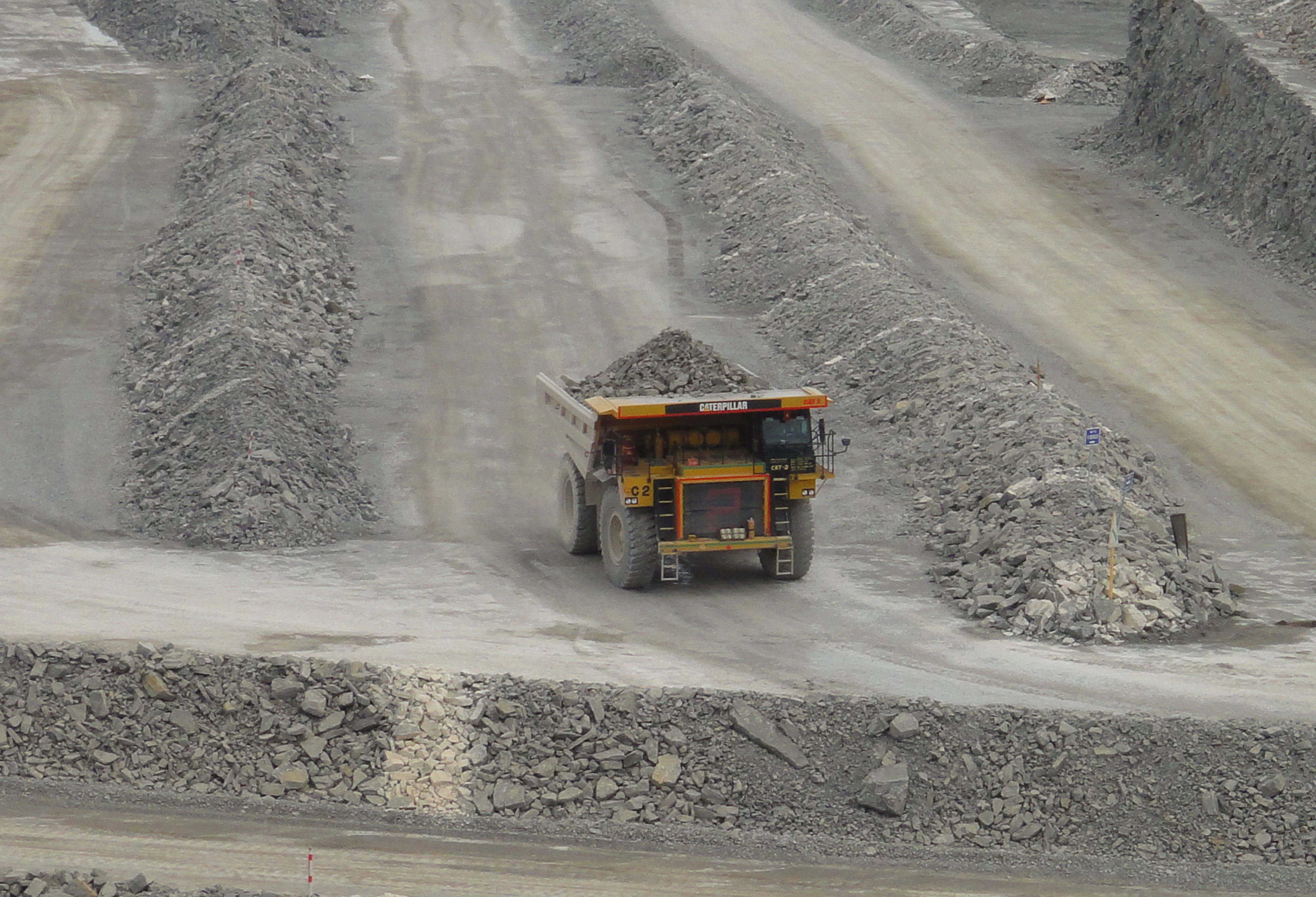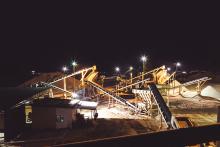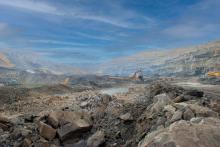
The Indian aggregate and construction equipment markets are poised for growth thanks to an ambitious new government sweeping to power. Guy Woodford reports.
“Strong leadership is a prerequisite in terms of driving momentum for change and Modi has been showing this, even before the elections,” says Sondhi. “Before, the balance between infrastructure development and the pro-environmentalists had gone too much towards the pro-environmentalists.
Now, the balance is much more equitable. Infrastructure progress and a sustainable environment can coexist.”
Sondhi believes that the major Indian government investment in new infrastructure, coupled with pledges of tens of billions of dollars from foreign governments, including Japan’s, towards India’s development will create strong demand for construction equipment across the world’s second most populated country.
He says the construction equipment manufacturing giant, the biggest seller in India, had tailored its range to meet key customer demands of high fuel efficiency and more specialist machinery.
“In India, we have the Ecomax engine, custom built for the construction industry. Our backhoe customers save around US$4,000 a year in fuel costs compared to our competitors. Our excavator customers save around $2,800 a year on fuel compared to our competitors.
Because emerging markets like India are particularly sensitive to petroleum costs, they are a huge part of each customer’s equipment buying decision. We continually focus on engineering and fuel consumption.
“The demand for backhoes in India is still strong and successful because of their versatility. However, the market is also moving towards more specialist equipment like excavators, wheeled loaders and compactors, as projects grow in size. We are seeing a particular increase in demand for our compactors, because of urban renewal and lighter projects.
“There is also a growing requirement for safe material handling equipment, such as skid steers and loadalls. We are launching two skid steers and two loadalls countrywide and I think the rise in their popularity will, like with the backhoes, bring revolutionary change to the market. India’s urban waste management programme offers ideal work for loadalls and skid steers.”
Sondhi says JCB’s heavy investment in its specialist equipment lines a few years ago has left it perfectly placed to meet rising domestic demand for these types of models.
“We opened manufacturing facilities for excavators, wheeled loaders and compactors in Pune in 2006-7. Today we have a comprehensive range of excavators in India, offering seven models. We have two categories of wheeled loader shovels, and three categories of vibratory compactors. These can be added to our five backhoe models. It means that JCB is not only the biggest seller of construction equipment in India, it also has the widest range.
“All JCB products are made to the same global standard, with all manufacturing sites being world-class. This means the equipment we manufacture in India is ideal for export to markets such as South East Asia, the Middle East and Africa.” Sondhi is also excited about the recent introduction to the Indian market of LiveLink, JCB’s machine telematics platform.
“Mobile telecommunications is a huge industry in India, with 800 million people (two thirds of the population) owning a mobile phone. With LiveLink our equipment owners will know exactly where their machines are, and get updates on their performance, including diagnoses of any problems and details of next service dates, via SMS. Our dealers will also benefit from access to this information and it means we can respond even quicker to our customers’ needs.”
Given Narendra Modi’s government’s strong majority in the Indian parliament and his exciting infrastructure plans, Volvo Construction Equipment (
“The demand from quarrying and aggregates customers is higher today compared to five or ten years ago and aggregates are currently being used in all types of projects across India – with the biggest demand coming from southern regions,” explains Dimitrov Krishnan, who was appointed the new head of Volvo CE in India in October 2014.
With more than 21 years of experience from the construction equipment business in India and Region APAC, Krishnan is looking forward to driving Volvo CE´s business in India and leveraging on Volvo´s strong customer offering in the quarry sector.
“India is a key market in Volvo CE’s global strategy and with the new government’s deregulation schemes and ambitious reform plans to support economic growth, these are truly exciting times, both for India and for the construction equipment business,” he says.
According to Krishnan, there are reasons to be optimistic about the business outlook for the quarry and aggregates sector in India. The demand has increased in recent times and he expects to see further growth over the coming five years.
Both in terms of products and aftermarket offering, Volvo CE says it is well positioned to strengthen its market share in the quarry and aggregate business even further.
“Thanks to better productivity and lower cost, the EC210 excavator with hydraulic breakers is currently our most popular product but we see an increase in demand also for other Volvo machines from our quarry and aggregates customers,” says Krishnan.
Cement Vision 2025: Scaling New Heights, a key report by A.T Kearney & the Confederation of Indian Industry published in April 2014, stated that based on an estimate from each of the cement-consuming sectors, production is projected to grow between 2.5 and 2.7 times its current volume and reach 550 to 600million tonnes by 2025. The key report said that by 2025 cement consumption per capita could overtake that of some developed countries.
Such a rise in projected demand, fuelled by more rapid infrastructure development and residential and commercial construction, is no surprise to
Rahul Srivastava, Quarry & Aggregates Industry Specialist at Caterpillar India, says: “Over the years, consolidation has been taking place in the cement industry and companies are now larger in size and operate at national, regional as well as a global level.
As a result, the cement industry is now better organised, better structured, much more competitive and continually seeking to realise cost efficiencies.
“Captive limestone quarries of cement producers have grown from small to medium size quarries and now to fully mechanised large size quarries. For most of the captive limestone quarries, 60tonne quarry trucks matched with 6.5m³ excavators and large wheeled loaders are now the norm. Caterpillar along with its dealers has played a key role in bringing solutions and helping put in place systems to enhance quarry operations. Caterpillar was the first manufacturer to introduce the 60tonne (Cat 773D) as well as the 100tonne (Cat 777D) quarry trucks in Indian limestone quarries. Caterpillar also introduced large wheeled loaders as face loading tools into Indian limestone quarries bringing the benefits of their higher mobility and lower operating cost.
“After-sales product support is also critical for large and capital intensive equipment. Gmmco Ltd, the Cat dealer for the south, central and west India is running the first maintenance and repair contract for quarry trucks in the cement industry, supporting seven Cat 777D trucks with a stringent guaranteed availability at Rajashree Cement Works of
Srivastava describes the aggregates industry as “heavily fragmented” and generally of small to medium scale operation. Quarry operations, he said, are mainly done by 20tonne excavators although he said recent trends indicate that 30 or 36tonne excavators are increasingly used.
He adds: “Caterpillar and its dealers Tractors India Private Limited and Gmmco Ltd are using their expertise to assist Indian quarry and aggregates customers achieve higher productivity and profitability.”
Ashoktaru Chattopadhyay, Vice president, Crushing & Screening at
“There is a developing awareness regarding the benefits to be derived from high quality aggregates which are produced using higher quality equipment as manufactured by Sandvik Construction. The demand for Vertical Shaft Impactors (VSI’s) is also increasing due to the demand for crushed sand increasing in western and southern India.
“The outlook for Sandvik’s crushing and screening business is looking especially positive in the next couple of years. The obtaining of necessary government clearance for setting up of crushers still remains a minor ‘speed break’ however.
Most importantly a lot of new infrastructure development projects are approaching the finalisation stages and this will increase the demand of crushing and screening plants.”
Among major projects Sandvik will be keen to supply equipment for are the expansion of Mumbai International Airport, and the Dedicated Freight Corridors Golden quadrilateral connecting East and West (Howrah-Mumbai) and North and South (Delhi-Chennai).
Chattopadhyay notes that in parts of southern India there is a requirement for better shaped products necessitating two-stage plants with fixed shaft/cone crushers being in demand. He says Sandvik Construction’s CJ411, CJ211 (Basalt and Granite) jaw crushers; CH430, CH440 cone crushers; CV218, CV228 impactors; and CS 86, CS144 screens are all in demand, with the firm mostly aiming to supply 200-300tonnes/hour crushers.
ICEMA’s big on construction equipment
According to ICEMA (Indian Construction Equipment Manufacturers’ Association), India’s Earthmoving and Construction Equipment (ECE) market is expected to grow by a healthy 20-25% over the next few years to reach 330,000 to 450,000 units sold in 2020, from current levels of about 76,000 units. This would imply a US$16 billion-$21 billion market, up from today’s $3 billion.
An ICEMA spokesperson says: “The sector will continue to be dominated by backhoe loaders (more than 40% of total demand), but broad-based growth is expected across products, with each segment expected to see double-digit growth. A rise in the use of concrete will also create demand for concrete equipment in infrastructure and housing projects.”
The ICEMA believes there are fundamental drivers that will propel the ECE industry forward. Firstly, it believes demand for ECE will continue to rise as a result of growth in traditional end-user industries, including construction and mining. Such an increased use of ECE in previously traditional applications to speed up projects will, says the ICEMA, give rise to new demand in applications such as digging and soil loading, especially in time-sensitive projects. ICEMA believes demand for ECE is also expected to grow in new segments such as agriculture, which have not historically been ECE users because of a lack of access but are slowly adopting the equipment.
Urbanisation will drive the demand for construction to meet residential, commercial, and infrastructure development needs, according to ICEMA. New players entering the market have made competition stiffer, thereby making ECE more affordable. ICEMA thinks this will further deepen the markets to cover users with ECE needs and previously low access. Finally, more financing of ECE and the increased use of rentals will, says ICEMA, create wider use by encouraging users that don’t necessarily want to own equipment. The rental market is especially expected to pick up in tier 2 and tier 3 towns, where growth will be driven by small contractors doing construction work.
The ICEMA states that a big challenge for India’s ECE industry to overcome is the lack of skilled manpower. “While we continue to put in the market increasingly sophisticated machines in increasing numbers the industry will face an increasing shortage of trained manpower to operate and service these machines. Most of the machines operate in remote areas, it is important that the customers have the accessibility to trained people in these areas. While the construction equipment manufacturers do have skill training programs, unfortunately these would not be adequate to meet the expected demand.”
Of OEMs ECE presence in India, the ICEMA spokesperson adds: “Most global OEMs have strengthened their presence in India, attracted by one of the world’s fastest growing construction equipment markets and their need to mitigate cyclicality in developed markets. Nearly all the leading global OEMs have already entered India, while a few more are in the process of entering. All these players can be expected to increase product variety, introduce new applications and services (e.g. Rentals, financing), and hence catalyse growth by increasing supply.”








